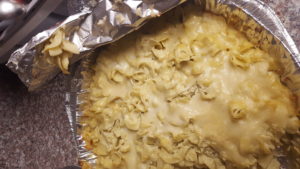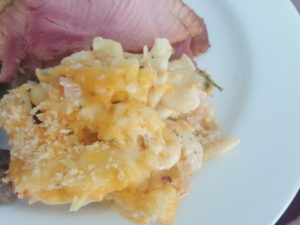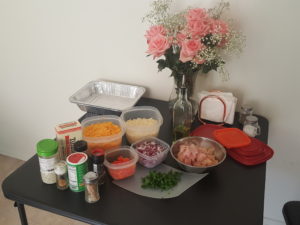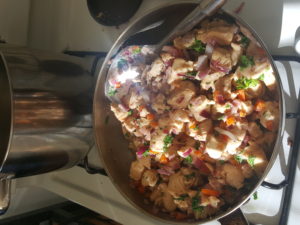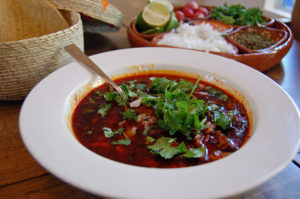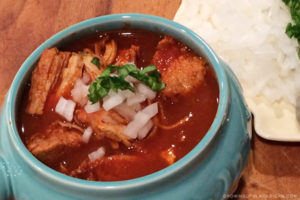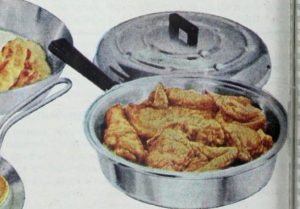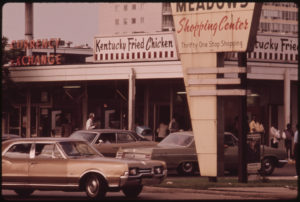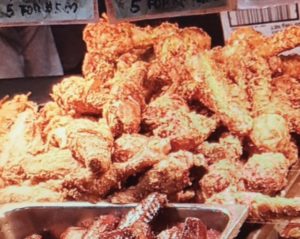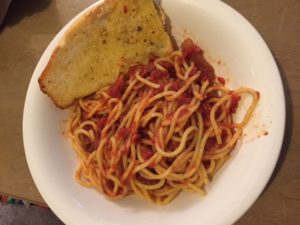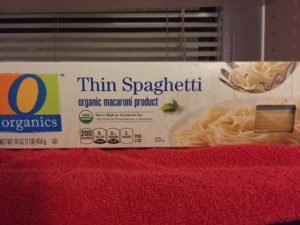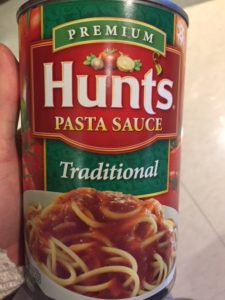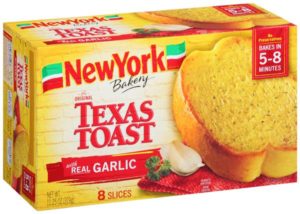Hope Buhl
Food & Culture
Dr. Annemarie Perez
12/13/2016
Final Project Cookbook Entry:
Dirty Rice-Vegan Style
My dirty rice dish is a recipe that always brings back childhood memories when I prepare it. My childhood was very humble but it was also full of love and great food. I am the youngest of six children whom my Mother raised and because there were so many mouths to feed my Mother always had to be creative to make food last and also to create what we thought were these grand dishes but really it was just my Mother being creative to make ends meet. This dish has always been unique to me because it was different every time and every time my Mother made it, it was delicious. The reason it was different every time was because my Mother would always cook dirty rice when our food got low and so she would use the ingredients that we had in the fridge and cabinet and she would create a master piece out of nothing.
I now prepare the many variations of this dish for my daughter and my family. It is the only dish that I have come to master; my family loves it and often request for me to make it for them. I love to make it for breakfast for my daughter because it’s quick and tasty. I scramble eggs, cheese, white onion, green onion, sausage salt, pepper and rice and she just loves it. I also make a soup out of this by preparing my own broth with tomato paste, water or vegetable stock and seasonings and just add the rice (a photo of this is attached and you can see how red and thick the sauce is).
Now that I have become a working Mom myself, I realize that rice is actually “a saving grace staple food” and what I mean by that is that rice is one of the most inexpensive foods and being that it is so cheap it keeps many bellies full across the world without breaking the bank. It made me emotional writing this paper because as a single working Mother myself of one child, I realized how hard it must have been for my Mother to have to feed six children and at the time and three grandchildren was also added to our family. I couldn’t even imagine having to do that on the income she had. So when I think of it I am both sad and proud of my Mother for having the strength and courage to even attempt such a great task. I am sad because I know it must have been very difficult for her and I can remember that a lot of the times all we had was rice and she would prepare a “sweet rice”, which was boiled and she would add sugar, butter, salt and pepper and it was just devine!
Rice is a staple food around the world and I thought it was so beautiful to research and experience the way people around the world enjoys rice as I did when I was younger and as I continue to enjoy.
Rice is typically rinsed before cooking to remove excess starch. Rice produced in the US is usually fortified with vitamins and minerals, and rinsing will result in a loss of nutrients. Rice may be rinsed repeatedly until the rinse water is clear to improve the texture and taste.
Rice is the staple food of over half the world’s population. It is the predominant dietary energy source for 17 countries in Asia and the Pacific, 9 countries in North and South America and 8 countries in Africa. Rice provides 20% of the world’s dietary energy supply, while wheat supplies 19% and maize (corn) 5%.
A detailed analysis of nutrient content of rice suggests that the nutrition value of rice varies based on a number of factors. It depends on the strain of rice, that is between white, brown, red, and black (or purple) varieties of rice – each prevalent in different parts of the world. It also depends on nutrient quality of the soil rice is grown in, whether and how the rice is polished or processed, the manner it is enriched, and how it is prepared before consumption.
An illustrative comparison between white and brown rice of protein quality, mineral and vitamin quality, carbohydrate and fat quality suggests that neither is a complete nutrition source. Between the two, there is a significant difference in fiber content and minor differences in other nutrients.
Riceland Foods, Inc., is a farmer-owned agricultural marketing cooperative and the world’s largest miller and marketer of rice. The company was founded in 1921 with headquarters in Stuttgart, Arkansas. Riceland owns and operates seven rice mills, including the largest rice mill in the world, located in Jonesboro, Arkansas. More than two-thirds of Riceland’s business is delivering, milling, storing, marketing and distributing rice. The core mission of this farmer-owned cooperative is to generate enhanced revenue and services for its members.
Some commercially available products under the Riceland Rice label include milled white, brown and parboiled rice, and Rice ‘N Easy Flavored Rice. The co-op also sells products to retailers, food service, and food manufacturing companies globally. Riceland also produces rice bran oil and rice flour and offers rice bran and hulls to pet food makers and livestock farmers as feed ingredients and bedding.
Riceland is also a major soybean processor in the Mississippi Delta region of the United States where milling, pressing, packaging and distribution occurs. It refines soybean and other vegetable oils for food service and food manufacturing companies. Soybean meal products are sold primarily to the poultry and catfish industries. In addition, winter wheat and limited quantities of corn are handled, depending on the needs of farmer-members. Bi-products that are commercially marketed include organic gardening amenities like PBH (pasteurized rice hulls) and rice hull ash which are bio-degradable and bio-renewable soil supplement replacements for perlite and vermiculite.
Each year, more than 1,500 employees receive, store, transport, process, and market more than 125 million total bushels of grain produced by its 5,500 farmer/owner members in Arkansas and Missouri.
Vegan Dirty Rice:
Ingredients:
- Jasmine rice (brand-Goya 2 cups)
- Pinapple (1 can of dole chopped)
- Serrano peppers (5 sliced)
- Garlic-fresh (half clove)
- Onion (1 white finely chopped)
- Parsley (half cup) mix at the end of preparation.
- Green onion (half stalk) chop finely
- Broccoli florets (fresh stalk 2) chop small
- Veggie bouillon, chicken bouillon or tomato bouillon for flavor and taste (2 table spoons)
- Grape seed oil (4 table spoons)
- Garlic powder (1 tablespoon)
Preparations:
- Cook two cups of Goya Jasmine rice in a medium sized pot with two cups of water and two cups of rice: I cook it until it is almost done because you don’t want it to be mushy when you fry it at the end. Set the rice aside while you prepare the other ingredients.
- Chop onion, garlic, green onion and broccoli florets add to a few tablespoons of grape seed oil and sauté until tender and golden.
- Sauté the Serrano peppers in separate skillet with a tea spoon of grape seed oil until golden or until your desired texture.
- In the same skillet you just sautéed the Serrano peppers in add six tablespoons of grape seed oil and add in the rice and veggies
- As you mix in all the rice and veggies, add the 2 table spoons of the bouillon of your choice and also add in the 1 table spoon of garlic powder
- Add in the parsley (half cup and mix in).
- Mix really well so that all the veggies and seasonings are mixed evenly throughout the rice.Dirty Rice Photo





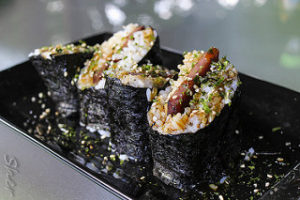
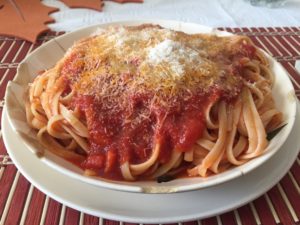

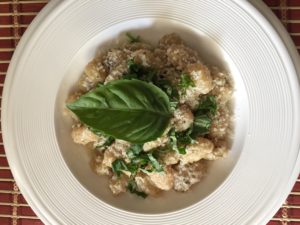
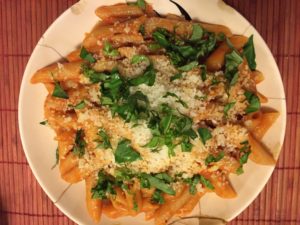
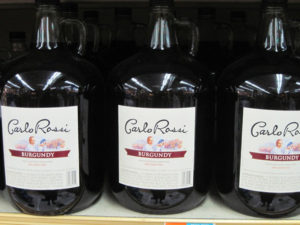
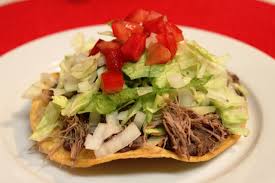
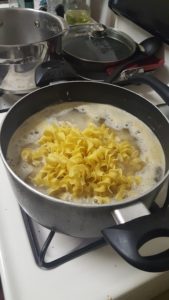

 cheese, we always mix both cheeses, but either one will come out good. Cover with foil and bake for about 15 to 20 minutes or until cheese has melted.
cheese, we always mix both cheeses, but either one will come out good. Cover with foil and bake for about 15 to 20 minutes or until cheese has melted.
